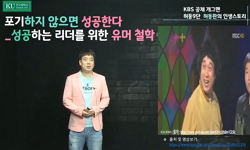Currently, countries worldwide are trying to reduce greenhouse gases, and Korea also attempts to decrease industrial greenhouse gas emissions. Aeration is the most energy-demanding process in a sewage treatment facility. Improvements in the aeration p...
http://chineseinput.net/에서 pinyin(병음)방식으로 중국어를 변환할 수 있습니다.
변환된 중국어를 복사하여 사용하시면 됩니다.
- 中文 을 입력하시려면 zhongwen을 입력하시고 space를누르시면됩니다.
- 北京 을 입력하시려면 beijing을 입력하시고 space를 누르시면 됩니다.

포기조에서 산기관의 설치위치가 용존산소에 미치는 영향 연구 = A Study on the Effect of Diffuser Installation Location on the Dissolved Oxygen in an Aeration Tank
한글로보기https://www.riss.kr/link?id=A107845680
- 저자
- 발행기관
- 학술지명
- 권호사항
-
발행연도
2021
-
작성언어
-
-
주제어
Aeration ; Diffuser ; Dissolved Oxygen ; DO ; Sewage treatment facility ; Water depth ; 포기 ; 산기관 ; 용존산소 ; 하수처리시설 ; 수심
-
등재정보
KCI등재
-
자료형태
학술저널
-
수록면
21-28(8쪽)
-
KCI 피인용횟수
0
- 제공처
-
0
상세조회 -
0
다운로드
부가정보
다국어 초록 (Multilingual Abstract)
Currently, countries worldwide are trying to reduce greenhouse gases, and Korea also attempts to decrease industrial greenhouse gas emissions. Aeration is the most energy-demanding process in a sewage treatment facility. Improvements in the aeration process's efficiency will significantly contribute to national goals and climate change response. We conduct the aeration performance test to derive the optimum conditions for the diffuser arrangement and its installation depth in the aeration tank. The ball-type diffusers are installed at about 1/3 level (900 mm below the water surface) and 2/3 level (1,800 mm below the water level) of the water tank. We observed the change in aeration tank dissolved oxygen (DO) concentration with the blown air volume and time. The average increase in DO concentration ranged from 1.13 mg/L to 1.73 mg/L when aeration was conducted at the middle of the aeration tank. In contrast, the average increase in DO concentration ranged from 0.52 mg/L to 1.04 mg/L when aeration devices were installed at the bottom of the aeration tank. These results indicated that installing diffusers in the middle depth of the aeration tank was more effective for oxygen delivery and power requirement. The average air power required to drive the DO between 0.5 mg/L and 3.0 mg/L for an hour is found as 0.42 kWh and 0.38 kWh for the bottom and middle part of the tank, respectively. The results show 9.5% energy saving for aeration in the middle. The results reveal that the lower the depth of the aeration diffuser installation, the better the oxygen delivery. Therefore, it will be possible to construct an aeration system with better energy efficiency when aeration diffusers are installed at low-water-depths.
참고문헌 (Reference)
1 Ministry of Environment, "Study on Policy Measures for Energy Independence of Public Sewage Treatment Facilities" 4-17, 2019
2 Ministry of Environment, "Study on Feasibility Study of Energy Independence of Public Sewerage Facilities in Preparation for Climate Change" 38-39, 2008
3 Lee, SJ, "Oxygen transfer and hydrodynamic characteristics of tower-type bioreactor with microbubble diffuser" 772-779, 2012
4 Martin, RW, "Oxygen transfer and aeration efficiency-influence of diffuser submergence, diffuser density, and blower type" 38 (38): 1-6, 1998
5 Kossay, KAA, "Effect of Airflow Rate and Submergence of Diffusers on Oxygen Transfer Capacity of Diffused Aeration Systems" 14 (14): 27-38, 2006
6 Kang, HW, "Comparison of Oxygen Transfer Efficiency Using Liquid Film Oxygen Aeration Device and Effect on Bioreactor" Yeungnam University 2011
7 Kossay, KAA, "Analysis of Oxygen Transfer Performance on Sub-surface Aeration systems" 3 (3): 301-308, 2006
8 Lee, YB, "A Study on the Efficiency of Dissolved Oxygen Supply in Aeration Tanks by Bubble Trap and Effects on Bioreactors" Yeungnam University 2012
9 Ji, JS, "A Study on the Efficiency Increase of Aeration Tanks in Sewage Treatment Plants" Korea Institute of Construction Technology 29-40, 1996
10 Seoul Metropolitan Government, "A Study on the Determination of the Optimum Diffuser Depth in the Aeration Tank, 2013 Sewerage Research Results Report" 129-182, 2013
1 Ministry of Environment, "Study on Policy Measures for Energy Independence of Public Sewage Treatment Facilities" 4-17, 2019
2 Ministry of Environment, "Study on Feasibility Study of Energy Independence of Public Sewerage Facilities in Preparation for Climate Change" 38-39, 2008
3 Lee, SJ, "Oxygen transfer and hydrodynamic characteristics of tower-type bioreactor with microbubble diffuser" 772-779, 2012
4 Martin, RW, "Oxygen transfer and aeration efficiency-influence of diffuser submergence, diffuser density, and blower type" 38 (38): 1-6, 1998
5 Kossay, KAA, "Effect of Airflow Rate and Submergence of Diffusers on Oxygen Transfer Capacity of Diffused Aeration Systems" 14 (14): 27-38, 2006
6 Kang, HW, "Comparison of Oxygen Transfer Efficiency Using Liquid Film Oxygen Aeration Device and Effect on Bioreactor" Yeungnam University 2011
7 Kossay, KAA, "Analysis of Oxygen Transfer Performance on Sub-surface Aeration systems" 3 (3): 301-308, 2006
8 Lee, YB, "A Study on the Efficiency of Dissolved Oxygen Supply in Aeration Tanks by Bubble Trap and Effects on Bioreactors" Yeungnam University 2012
9 Ji, JS, "A Study on the Efficiency Increase of Aeration Tanks in Sewage Treatment Plants" Korea Institute of Construction Technology 29-40, 1996
10 Seoul Metropolitan Government, "A Study on the Determination of the Optimum Diffuser Depth in the Aeration Tank, 2013 Sewerage Research Results Report" 129-182, 2013
11 Ministry of Environment, ""Sewage treatment facility energy independence declaration !" Basic plan for energy independence" 8-, 2010
동일학술지(권/호) 다른 논문
-
- 한국수처리학회
- 황태문 ( Tae-mun Hwang )
- 2021
- KCI등재
-
나노여과를 통한 경도 조정 주조용수의 관능검사 분석 연구
- 한국수처리학회
- 김재범 ( Jae Bum Kim )
- 2021
- KCI등재
-
온도에 따른 코발트 함유 폐수의 침전 처리 특성 기초 연구
- 한국수처리학회
- 송혜원 ( Hyewon Song )
- 2021
- KCI등재
-
혐기성 공동소화 공정에서 커피찌꺼기 산 발효액이 바이오가스 생산에 미치는 영향
- 한국수처리학회
- 최희정 ( Hee-jeong Choi )
- 2021
- KCI등재
분석정보
인용정보 인용지수 설명보기
학술지 이력
| 연월일 | 이력구분 | 이력상세 | 등재구분 |
|---|---|---|---|
| 2027 | 평가예정 | 재인증평가 신청대상 (재인증) | |
| 2021-01-01 | 평가 | 등재학술지 유지 (재인증) |  |
| 2018-01-01 | 평가 | 등재학술지 유지 (등재유지) |  |
| 2015-01-01 | 평가 | 등재학술지 유지 (등재유지) |  |
| 2011-01-01 | 평가 | 등재학술지 유지 (등재유지) |  |
| 2009-01-01 | 평가 | 등재학술지 유지 (등재유지) |  |
| 2006-09-15 | 학회명변경 | 영문명 : Korea Technological Society Of Water And Wastewater Treatment -> Korean Society of Water Science and Technology |  |
| 2006-09-15 | 학술지명변경 | 한글명 : 수처리기술 -> 한국수처리학회지외국어명 : Joural of Korea Technological Society of Water and Wastewater Treatment -> Joural of Korean Society of Water Science and Technology |  |
| 2006-01-01 | 평가 | 등재학술지 선정 (등재후보2차) |  |
| 2005-08-25 | 학회명변경 | 한글명 : 한국수처리기술연구회 -> 한국수처리학회 |  |
| 2005-05-30 | 학술지명변경 | 한글명 : 수처리기술(水處理技術) -> 수처리기술 |  |
| 2005-01-01 | 평가 | 등재후보 1차 PASS (등재후보1차) |  |
| 2003-07-01 | 평가 | 등재후보학술지 선정 (신규평가) |  |
학술지 인용정보
| 기준연도 | WOS-KCI 통합IF(2년) | KCIF(2년) | KCIF(3년) |
|---|---|---|---|
| 2016 | 0.17 | 0.17 | 0.16 |
| KCIF(4년) | KCIF(5년) | 중심성지수(3년) | 즉시성지수 |
| 0.17 | 0.17 | 0.231 | 0.09 |





 KISS
KISS




